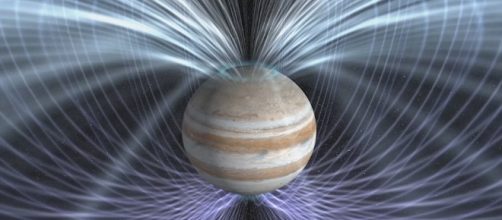Scientists are utilizing the Hubble Space Telescope in ultraviolet wavelengths to observe Jupiter´s auroras -- some of the most intense auroras in the solar system -- hundreds of times more intense than the ones seen on earth. The observation of the bright displays of light at the poles of Jupiter are synchronized with studies performed by NASA´s Juno Spacecraft of the gas giant´s magnetosphere.
Jupiter
This planet is the fifth and largest planet in the solar system and is best known for a big red spot (great Red Spot) on its surface. This noticeable atmospheric feature has existed for over three centuries on the planet´s surface.
Jupiter has been visited by various robotic spacecraft, some of which include the Pioneer missions, Voyager, Galileo Orbiter and most recently by New Horizons. The next probe to visit the planet will be Juno next July 4, 2016.
Auroras
Unlike the auroras on earth, which are caused by streams of energetic particles (solar storms) interacting with earth´s magnetic field, the auroras seen on Jupiter´s atmosphere are believed to be produced by its own dynamo. As the planet rotates once every 10 hours, it drags a great amount of its own magnetic field, exiting the gases that make up its atmosphere and creating light displays on its poles.
Jupiter´s spin can produce 10 million volts at the poles. Solar storms contribute to Jupiter´s auroras.
It´s believed that an X-ray pulsar exists within Jupiter´s northern auroras. Chandra has been able to observe this pulsar, emitting X-rays every 45 minutes, on Jupiter´snorthern pole.
Future observations
It´s thought that the production of X-rays is not related to Io´s volcanic activity, but to the solar storms; however, there are other possible causes. In the next years, scientists intend to understand more on Jupiter´s auroras. While the Hubble images provide data in great detail, Juno's close approach to the auroras will bring up even more detailed information about the formation of these strong bright features on the gas giant planet.
The future study of Jupiter´s atmosphere and structure will broaden scientists understanding of the processes occurring in cosmology.

